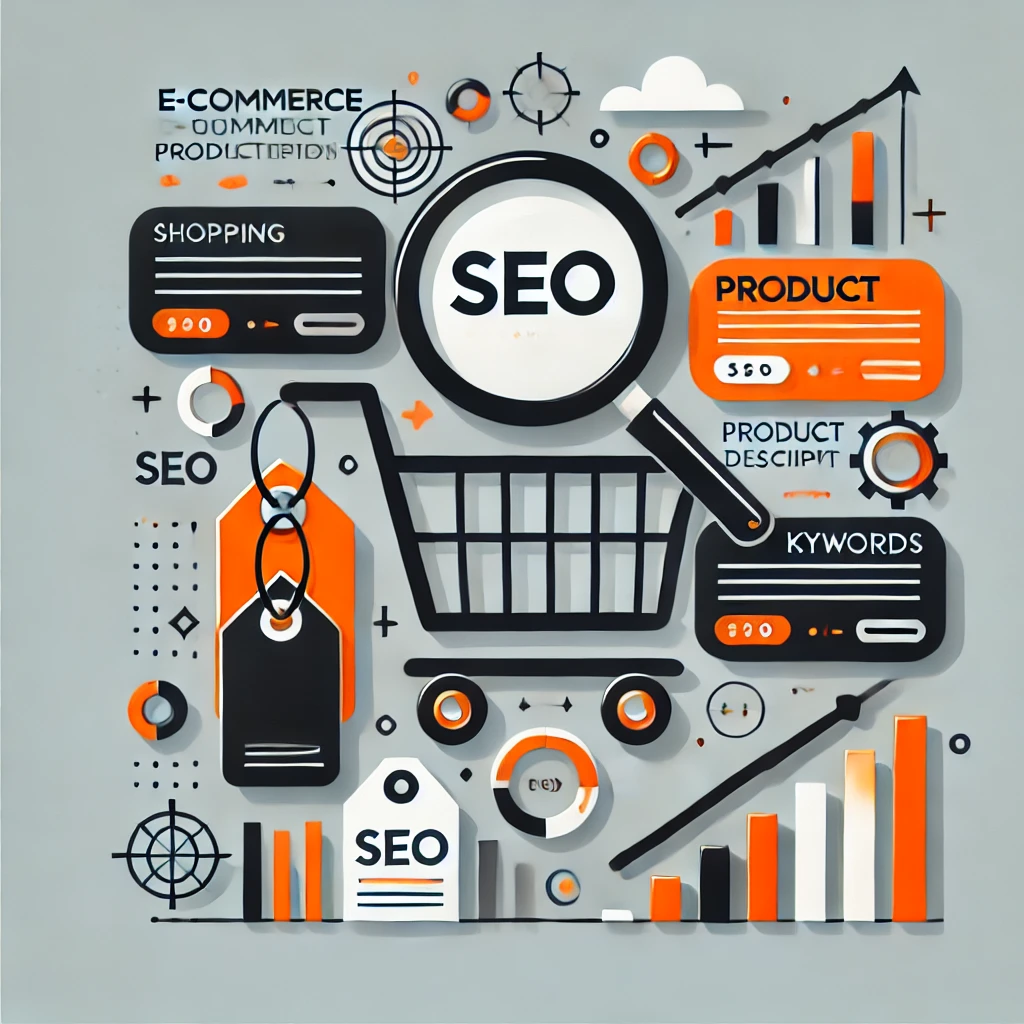The Ultimate Guide to Optimising E-commerce Product Descriptions for SEO
By Brendan Byrne Tuesday, November 26, 2024

Product descriptions serve a dual purpose: they not only convert visitors into buyers but also enhance search engine rankings. For e-commerce business owners and content marketers, mastering the art of crafting compelling and SEO-friendly product descriptions is essential for driving traffic and boosting sales. This guide outlines effective strategies for creating product descriptions that resonate with customers while satisfying search engines.
1. Writing Compelling Product Descriptions that Convert
To create product descriptions that captivate your audience, follow these key strategies:
Understand Your Audience
Before you start writing, take the time to understand your target market. What challenges do they face? How does your product solve these issues? Tailoring your descriptions to address these questions helps create a narrative that speaks directly to your customers.
Highlight Unique Selling Points (USPs)
Identify what makes your product stand out. Whether it’s superior quality, innovative features, or exceptional customer service, make sure to spotlight these USPs in your descriptions. Use persuasive language that invokes desire and urgency. For example, instead of saying, “Our chair is ergonomic,” you might say, “Experience unparalleled comfort with our ergonomically designed chair, perfect for long hours at your desk.”
Engage with Storytelling
Incorporate storytelling to connect emotionally with your audience. Share anecdotes or scenarios that illustrate how your product fits into their lives. This narrative approach not only captivates readers but also makes the product more relatable.
2. Optimising Product Pages with SEO-Friendly Keywords
Integrating SEO into your product descriptions is key to improving visibility in search engine results. Here’s how to do it effectively:
Conduct Keyword Research
Start by identifying relevant keywords that potential customers might use to search for your product. Use tools like Google Keyword Planner, SEMrush, or Ahrefs to find high-volume keywords with manageable competition.
Strategic Keyword Placement
Incorporate your primary keywords naturally into the product title, first paragraph, and throughout the description. Avoid keyword stuffing, which can lead to penalties from search engines. Aim for a keyword density of around 1-2%25 to maintain readability.
Optimise Metadata
Don’t overlook the importance of metadata. Ensure that your product title tags and meta descriptions are optimised with relevant keywords. This not only boosts SEO but also enhances click-through rates.
3. Balancing Product Details with Engaging Copy
While engagement is crucial, providing detailed product information is equally important. Here’s how to strike the right balance:
Structure for Clarity
Organise your product description with clear headings and bullet points to enhance readability. Include sections such as:
- Product Features: Highlight key features in bullet points for quick access.
- Specifications: Provide essential details like dimensions, materials, and care instructions.
- Benefits: Emphasise how the product addresses a specific need or improves the customer’s life.
Use Visuals Wisely
Incorporate high-quality images or videos alongside your descriptions. Visual content helps illustrate your product's features and benefits, making it more appealing to potential buyers.
4. The Importance of User-Generated Content (Reviews and FAQs)
User-generated content, such as reviews and frequently asked questions (FAQs), can significantly enhance your product pages. Here’s why:
Build Trust and Credibility
Encourage customers to leave reviews to improve your product’s credibility. Positive feedback acts as social proof, reassuring potential buyers about your product's quality. Make sure to include a review section on your product pages and respond to customer feedback to foster engagement.
SEO Benefits of User-Generated Content
User-generated content is valuable for SEO. Search engines favour fresh, unique content, and customer reviews contribute to this. Additionally, incorporating relevant FAQs can enrich your content, making it more likely to rank for long-tail keywords.
Address Common Concerns
FAQs allow you to tackle common customer queries directly on the product page. This not only enhances the user experience but also reduces bounce rates, signalling to search engines that your page is valuable.
5. How Product Descriptions Contribute to Overall Site Ranking
While product descriptions are just one part of your e-commerce strategy, they significantly impact your overall site ranking. Here’s how:
Improved Indexing
Search engines index product descriptions to determine relevance. Well-optimised descriptions increase the likelihood of your products appearing in search results, driving organic traffic to your site.
Enhanced User Experience
A well-crafted product description can improve user experience by providing necessary information and enticing customers to make a purchase. A positive user experience can lead to lower bounce rates and higher dwell times, both favourable for SEO.
Increased Conversions
Ultimately, the primary goal of your product descriptions is to convert visitors into buyers. When your descriptions are compelling and informative, they are more likely to lead to sales, sending positive signals to search engines about your site's quality.
Optimising your e-commerce product descriptions for SEO is a vital strategy that can drive traffic, improve rankings, and boost conversions. By writing compelling descriptions, integrating SEO-friendly keywords, balancing product details with engaging copy, and leveraging user-generated content, you can create product pages that resonate with your audience and stand out in search engine results.
Investing time and effort into perfecting your product descriptions will not only enhance your e-commerce site's performance but also foster customer loyalty. Start implementing these strategies today and watch your e-commerce store thrive!
